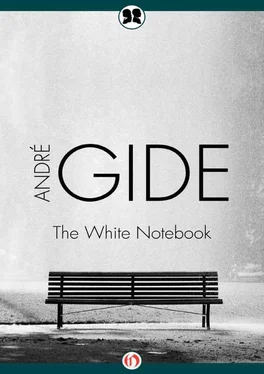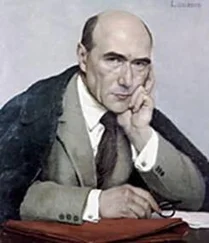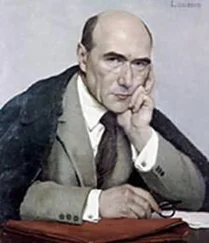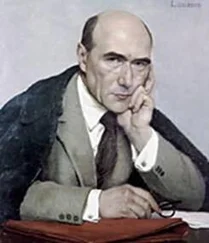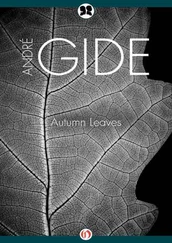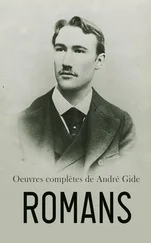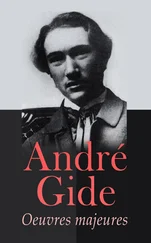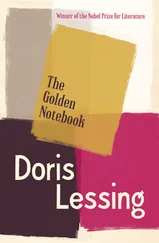1Gide rightly emphasized in many of his writings the influence of his early puritanical training on his art. According to him, two-thirds of the biblical quotations set down in the first draft of the Notebooks were eliminated before publication at the suggestion of his friend, Albert Demarest. (Notes not numbered are supplied by the translator.)
2The primary vision (la vision commencée) appears in Urien’s Voy age as the idea or principle which each of us is to manifest in his own life. This section reflects the influence of Schopenhauer’s The World as Will and Idea on the young writer.
3In a later preface to the Notebooks (1930), the author expressed regret over its defects, holding that the writer should always exercise absolute control over his medium.
4Gide later condemned the pride that resulted from such a victory. He insisted that he had at first thought it good to struggle, that true wisdom consisted in accepting defeat, in not opposing oneself.
5Jean Delay in his monumental work on the early life of Gide (La Jeunesse d’André Gide, Gallimard, 1956) maintains that in the foregoing passage the writer reveals for the first time one of the deepest secrets of his psychology: the influence of his mother in preventing his physical union with Madeleine Rondeaux.
6Publication of the Notebooks did mark a turning point in the life of the author. It marked the end of his sheltered life of mystic revery and passive introspection and the beginning of an active life of exploration and conquest. Schopenhauer’s visionary became the romantic disciple of Goethe.
7Setting the pattern that was to serve for a lifetime of creative effort, the author abstracts from reality and freely changes details. His mother’s words might well have been spoken after the death of Emile Rondeaux, the father of Madeleine (Emmanuèle).
8It is significant that the book originally envisioned as Allain was finally published as The Notebooks of André Walter. The German name suggests of course Goethe’s Werther, which has a similar theme and which Gide was reading during the period of the composition of the Notebooks.
9And therefore raise thee up, o’ercome thy panting
With spirit that o’ercometh every battle,
If with its heavy body it sink not.…
And said: “Go on, for I am strong and bold.”
(Longfellow’s translation.)
10The tumultuous inner life with its conflicting passions and ideals is an appropriate theme for Gide’s first published work. During the period of its composition he expressed the opinion that the crisis depicted in it was of such general interest that others might use it before he completed his work. Later, in his autobiographical If It Die (1926), he wrote, “It was not only my first book, it was my summation.”
11It has been said that Gide’s art is a sustained attempt to understand and explain himself. Perhaps The White Notebook is a symbolic account of his struggle to free himself from carnal temptations through the mystic, idealized love first experienced in his youth. Delay sees the perfect image which he creates here (an Echo for Narcissus) as the projection of his superego: the embodiment in his love of all those qualities which he holds in high esteem. Jean-Paul Sartre’s handling of a similar theme in Saint-Genêt (1952) suggests the connection between André Walter’s search for a kindred soul and André Gide’s predicament.
12Name crossed out. (Gide’s note.)
13The notebooks in which Gide recorded his readings show that he read the writers mentioned here during the period of the composition of The White Notebook. Gustave Flaubert deserves special mention since he influenced Gide’s aesthetics and caused him to consider titling his first book The New Sentimental Education. (Flaubert’s Sentimental Education was inspired in part by personal reminiscences, notably those of his unhappy love affair, at sixteen, with an older woman who later lost her mind.)
14Word missing. (Gide’s note.)
15 The Temptation of Saint Anthony, a romantic adaptation of an old Christian legend, pictures the hermit in the desert, tempted by sensual pleasures and secret intellectual delights but victorious in his struggle to remain virtuous.
16Gide wrote that Schopenhauer was responsible for his alternating periods of anguish and ecstasy, for his awareness of a second reality behind the visible one, and for his passion for poetry and music.
17Pierre Louis warned Gide against undertaking an autobiographical work at the age of twenty and cited Goethe’s regret over the shortcomings of Werther as proof that such an undertaking should come toward middle age. Ironically, structural integrity and variety of detail, the two elements advocated by Louis, are missing from the Notebooks.
18This passage invites comparison of André Walter and his feminine counterpart, Alissa, in Strait Is the Gate (1909). She epitomizes the same ideal and mystical love. Afraid of physical love, she longs for an impossible happiness, for perfect Love, for God.
19Emmanuèle is the fictional name of Madeleine Rondeaux, who appears under a different name in many other works. Significant details of her life before and after she became Mme. André Gide have been related in subsequent works, notably If It Die, Strait Is the Gate and Et nunc manet in te (1951). These include the infidelity and divorce of her mother, the death of her father, and her unconsummated marriage together with the suffering, privation and shame which she endured for her husband’s sake. In Gide’s imagination Emmanuèle was transformed, idealized, ennobled, imbued with the very qualities he would like to have attributed to himself.
20The choice of Brittany as the setting may have resulted from Gide’s admiration for Flaubert. The interplay of setting, race, and religion may reflect the thinking of Hippolyte Taine, whose works were of especial interest to him during the period of the composition of the Notebooks. An interesting parallel between the two Andrés can be established on the basis of Taine’s three great factors (Race, Environment and Epoch): Walter’s Breton mother was a Catholic, his Saxon father a Protestant; Gide’s Norman mother came from a Catholic family, and his Protestant father traced his ancestry to Languedoc; both were the product of two bloodstreams, two regions and two faiths; the anguish of both was caused by the interplay of Taine’s three factors.
21Lucie was an older sister whom André Walter had lost in 1885. (Gide’s note.)
22The influence of the older sister illustrates Gide’s technique of abstracting and reinterpreting reality in terms of his own psychology. It has been suggested that the older sister is identified with Gide’s mother — the symbol of purity and the one who keeps Emmanuèle (Madeleine) and André physically apart even as she makes possible their mystical union.
23This passage recalls the Tristan legend as well as earlier and later writings that stress gratification through denial: the Orphic cult and Platonism, the troubadours and the chivalric tradition, Dante, German Romanticism.
24The notion of the role of the poet in bringing out the truth hidden behind the appearance of things, though probably suggested by Schopenhauer, was nurtured by the Symbolists. Gide defended the doctrine of the Symbolists in his second work, Narcissus (1892).
25Pages rediscovered (note by André W.). (Gide’s note.)
26The allusion to the courtesan probably has no parallel in the life of the author. We learn from his journals, however, that he began at an early age to practice the solitary vice that caused him to be expelled from school, to incur his mother’s disapproval, and subsequently perhaps to associate sin with sex.
Читать дальше
